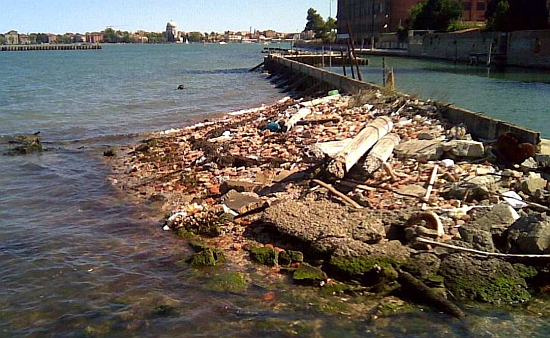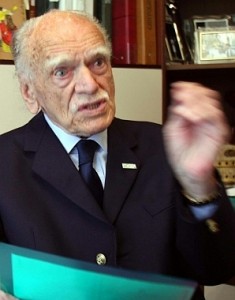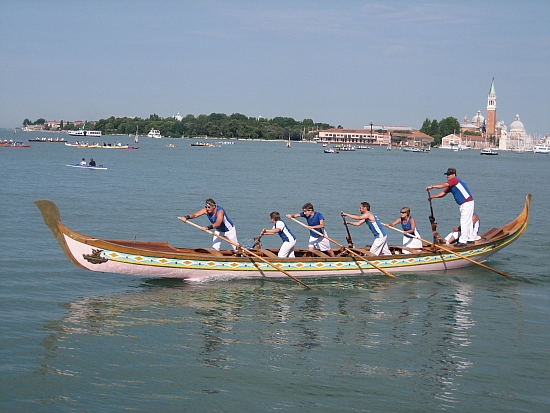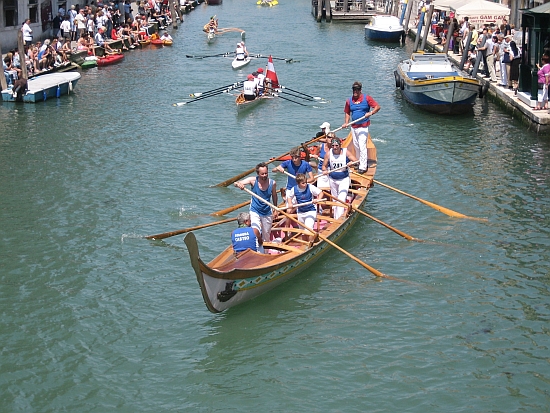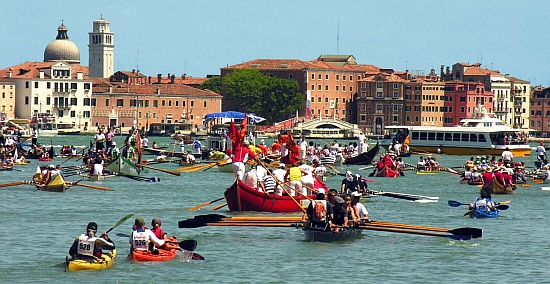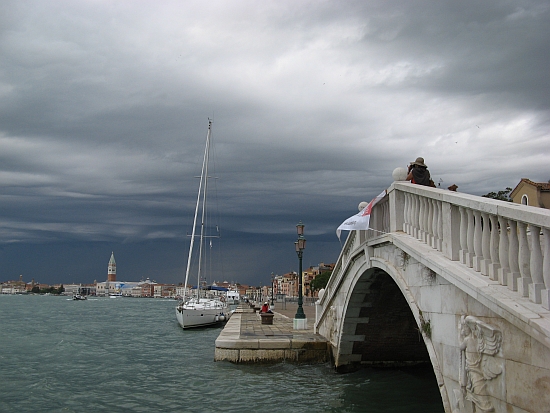
One of the things I love most about Venice is its voluptuous, velvety silence. Many writers over the past few centuries have commented on this, though they have also commented (as do I) on the noise that is generated during the day by working people, their vehicles, and their voices. But hey, it’s daytime; people are supposed to be working, or at least doing things. “Get out of the house” is always good advice for physical and mental health, except where the mental health of your neighbors might be concerned.
In any case, people used to go home at night and things eventually got quiet.
The novelty in the past few decades is the noise by night. Summer, and now early autumn, is especially prone to nocturnal racket, what with kids zooming around the lagoon, and the city’s canals, in boats with motors of 40, 90, and even more horsepower.
Lino can’t figure it out: “It used to be that the only people who were out at night were fishermen,” he said this morning. “Now it’s everybody.”
Last night the situation took a turn for the worse.
We had already endured the usual nightly yelling and running (and yelling and standing still) of families going up and down the street outside our bedroom window. I’m not saying they ought to be home at 9:00 with the shutters bolted (though it would be nice if they’d do it by midnight). I’m merely saying that stopping to talk with loud voices about things ranging from what they’re going to do tomorrow up to and including their upcoming operation to remove their ovaries (not made up) is tiring and obnoxious. To say nothing of the man somewhere upstairs who, when the lights go off around the neighborhood, takes a handkerchief that must be the size of a tablecloth and begins giving two long honking blows of his nose, separated by a silence of about 18 seconds, followed by two long blows, etc., for way too long. It’s like the foghorn code, except he’s not warning anybody away. We’re stuck here.
I’m not saying he should be forbidden to blow his nose. I’m saying he might consider closing the window. Of course, we could close our window, but that would mean suffocating to death. So maybe closing his window means he would suffocate? Let’s just stop right here. I’m saying he could get some treatment for whatever this condition is, because it can’t be all that enjoyable for him in any case, after the first forty minutes or so.
So what does a certain Umberto Bossi have to do with all this cacophony?
He is the leader of a political party known as the Northern League, whose mission in life is to slag anything and anybody south of the Po River, and to promote the secession of said northern area (the regions of Veneto, Lombardy, and environs) from the rest of Italy. He and his cohorts want to establish a new entity known as Padania, an independent, financially and politically self-sufficient entity, in order to be rid of all of the injustices which a national government inflicts on the productive, honest, disciplined, hard-working, right-thinking northerners.
Unable, so far, to accomplish this goal, he and his cohorts spend most of their time in parliament blocking other parties’ initiatives.
So what do he and his followers have to do with the most-beautiful-city-in-the-world, and Erla’s nightly efforts to slumber?
Because every September he stages a huge rally here. Why here? Because the Po River, the aforementioned geographical and emotional frontier between Us and Them, flows into the sea not far away, and because Venice is the greatest stage set imaginable, perfect for publicity. You can’t imagine a serious rally being put on in, say, Rovigo, though they do have a very nice stadium.
This rally draws the faithful from all over, who come to hear his incendiary speechifying, and to witness his emptying of a flask of Po River water into the Lagoon. Great theatre, though I still don’t quite grasp its meaning. From 1600 to 1604, the Venetians cut the Po in half to send it southward; if it had continued to debouch into the Lagoon, by now Venice would be sitting in the middle of cornfields. But this is a detail. The Po belongs to Bossi and he wants to bring it to Venice.
So yesterday, in the build-up to today’s Big Event, there were clashes between groups demonstrating against Mr. Bossi and his League and the police who were trying to contain their destructive enthusiasm.
And last night, at about 3:30 (when silence was, in fact, reigning over our streets and canals), we were all blasted awake by a new and appalling noise.
A motorboat was going down the canal with an amplifying system brought from some exploded star. And it was playing music: “Faccetta Nera,” a marching song adopted by the Fascists (though it predates them), full of racist and colonialist overtones. Everybody over the age of two — even I, by now — know that it is hugely incorrect politically to play “Faccetta Nera” or any of its companions such as “Giovinezza” (Youth).
But there it was, ripping the night asunder a mere five steps from our front door. It faded away as the boat proceeded, presumably in a tour around most, if not all, of the city. But I wasn’t sure. I lay there awake for a while expecting it — them — to come back, thinking about how glad I am that whoever these people might be have the right to make so many people miserable. Democracy is indeed a great thing.
This morning, a sunny Sunday, the streets around here are full of police and carabinieri in riot gear, waiting to form up and get to work. Lino begged me not to make photographs, so I didn’t.
The enormous floating platform with its banners and podium, is tied up, as usual, at the riva dei Sette Martiri, between Arsenal and the Giardini. Police helicopters are rumbling around overhead. But I know at least some people are happy. Two bakeries are open — something unheard-of on a normal Sunday — because they also sell snacks and cold drinks, and the faithful are going to really need these items, especially if they do a lot of shouting.
“Non tutti i mali vengono per nuocere,” as the saying goes: It’s an ill wind that blows no good.
Perhaps the promised thunderstorms will indeed strike this afternoon. They would ruin the regata at Burano, true, but it could be worth it, to wash away all this detritus.

